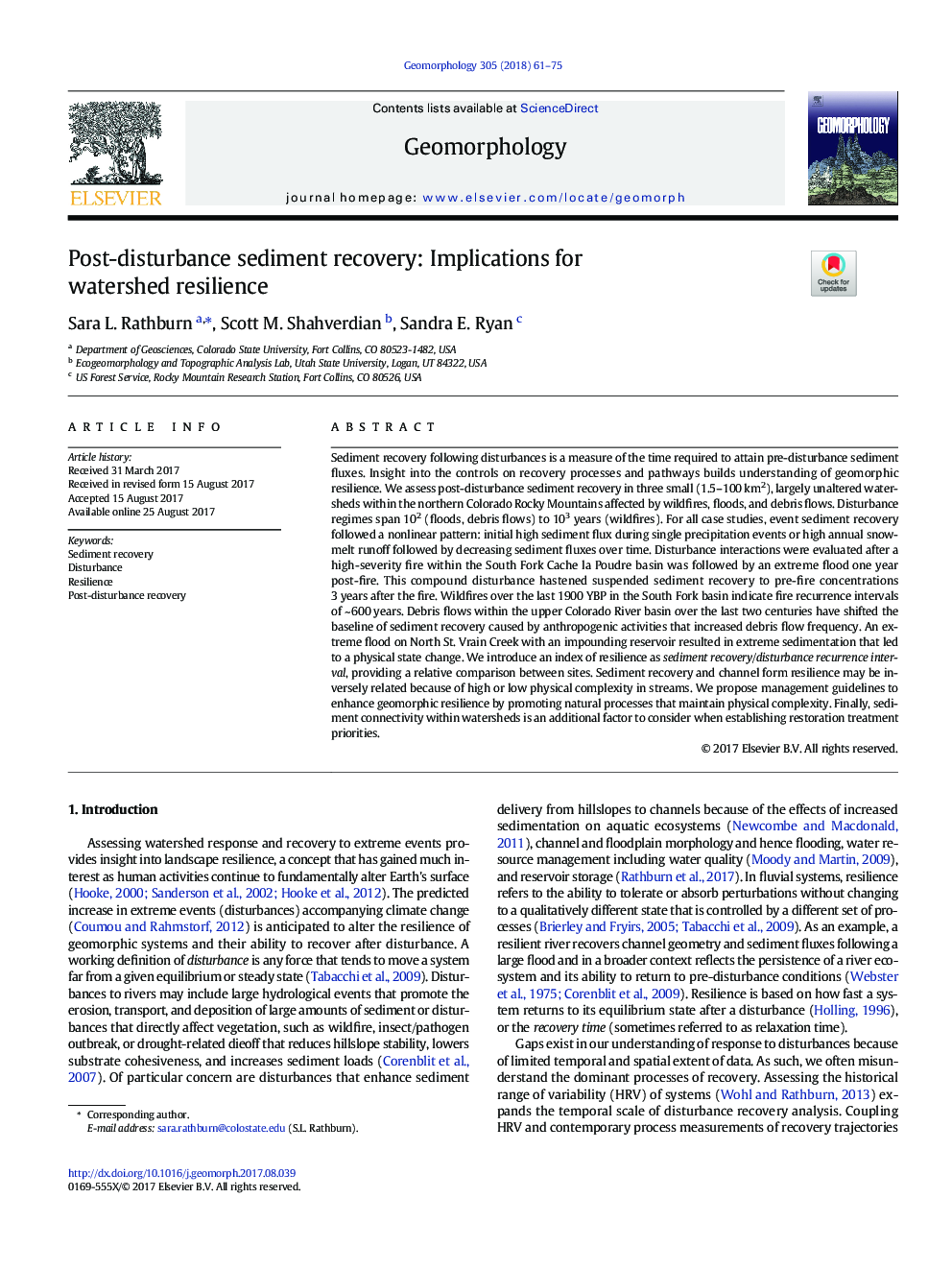| کد مقاله | کد نشریه | سال انتشار | مقاله انگلیسی | نسخه تمام متن |
|---|---|---|---|---|
| 8908155 | 1635345 | 2018 | 15 صفحه PDF | دانلود رایگان |
عنوان انگلیسی مقاله ISI
Post-disturbance sediment recovery: Implications for watershed resilience
ترجمه فارسی عنوان
بازیابی رسوبات پس از اختلال: اثرات انعطاف پذیری آبخیزداری
دانلود مقاله + سفارش ترجمه
دانلود مقاله ISI انگلیسی
رایگان برای ایرانیان
کلمات کلیدی
بازیابی رسوب، اختلال، انعطاف پذیری، بازیابی پس از اختلال،
موضوعات مرتبط
مهندسی و علوم پایه
علوم زمین و سیارات
فرآیندهای سطح زمین
چکیده انگلیسی
Sediment recovery following disturbances is a measure of the time required to attain pre-disturbance sediment fluxes. Insight into the controls on recovery processes and pathways builds understanding of geomorphic resilience. We assess post-disturbance sediment recovery in three small (1.5-100Â km2), largely unaltered watersheds within the northern Colorado Rocky Mountains affected by wildfires, floods, and debris flows. Disturbance regimes span 102 (floods, debris flows) to 103Â years (wildfires). For all case studies, event sediment recovery followed a nonlinear pattern: initial high sediment flux during single precipitation events or high annual snowmelt runoff followed by decreasing sediment fluxes over time. Disturbance interactions were evaluated after a high-severity fire within the South Fork Cache la Poudre basin was followed by an extreme flood one year post-fire. This compound disturbance hastened suspended sediment recovery to pre-fire concentrations 3Â years after the fire. Wildfires over the last 1900Â YBP in the South Fork basin indicate fire recurrence intervals of ~Â 600Â years. Debris flows within the upper Colorado River basin over the last two centuries have shifted the baseline of sediment recovery caused by anthropogenic activities that increased debris flow frequency. An extreme flood on North St. Vrain Creek with an impounding reservoir resulted in extreme sedimentation that led to a physical state change. We introduce an index of resilience as sediment recovery/disturbance recurrence interval, providing a relative comparison between sites. Sediment recovery and channel form resilience may be inversely related because of high or low physical complexity in streams. We propose management guidelines to enhance geomorphic resilience by promoting natural processes that maintain physical complexity. Finally, sediment connectivity within watersheds is an additional factor to consider when establishing restoration treatment priorities.
ناشر
Database: Elsevier - ScienceDirect (ساینس دایرکت)
Journal: Geomorphology - Volume 305, 15 March 2018, Pages 61-75
Journal: Geomorphology - Volume 305, 15 March 2018, Pages 61-75
نویسندگان
Sara L. Rathburn, Scott M. Shahverdian, Sandra E. Ryan,
